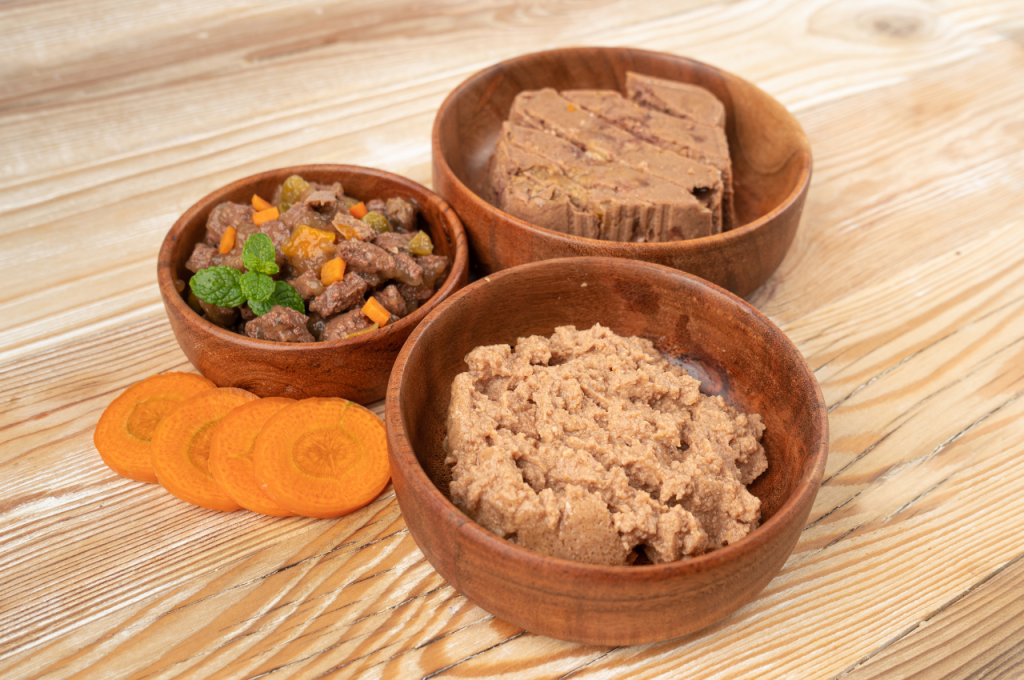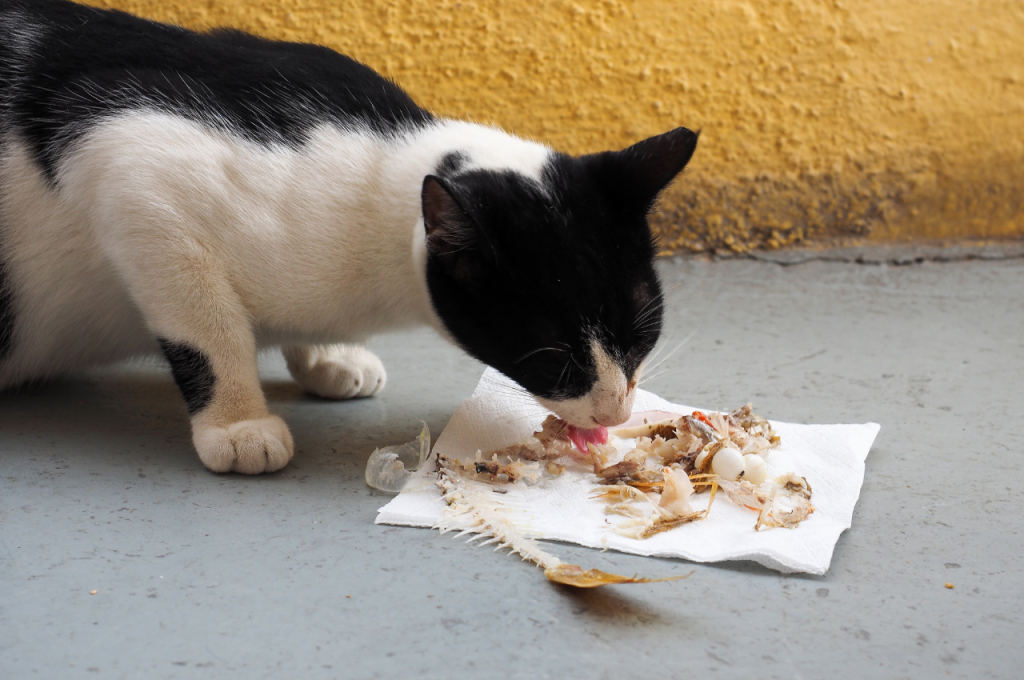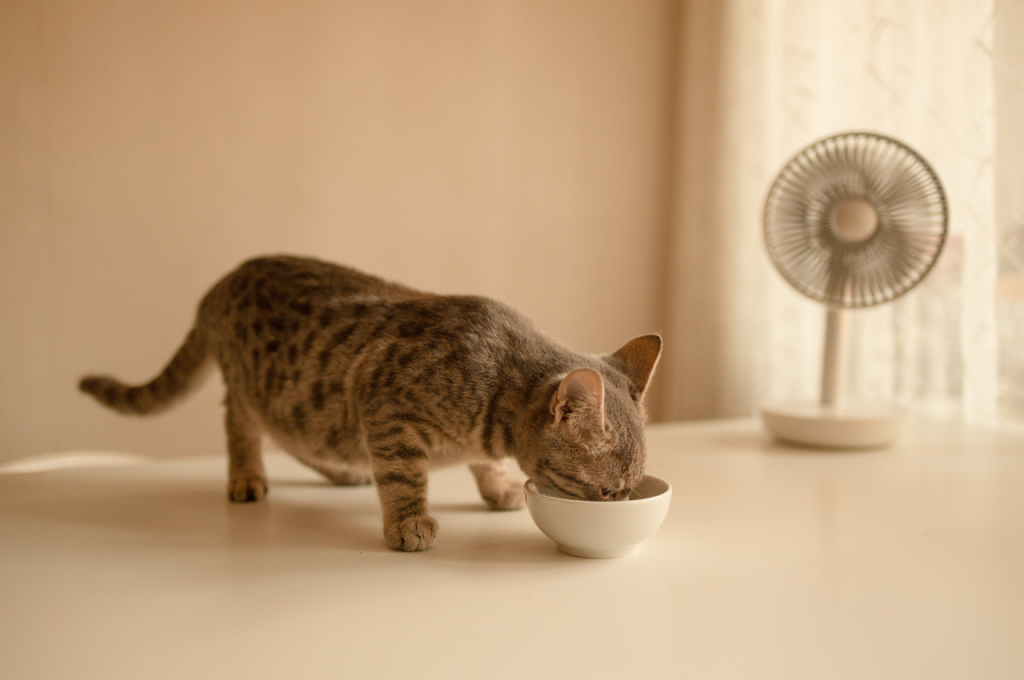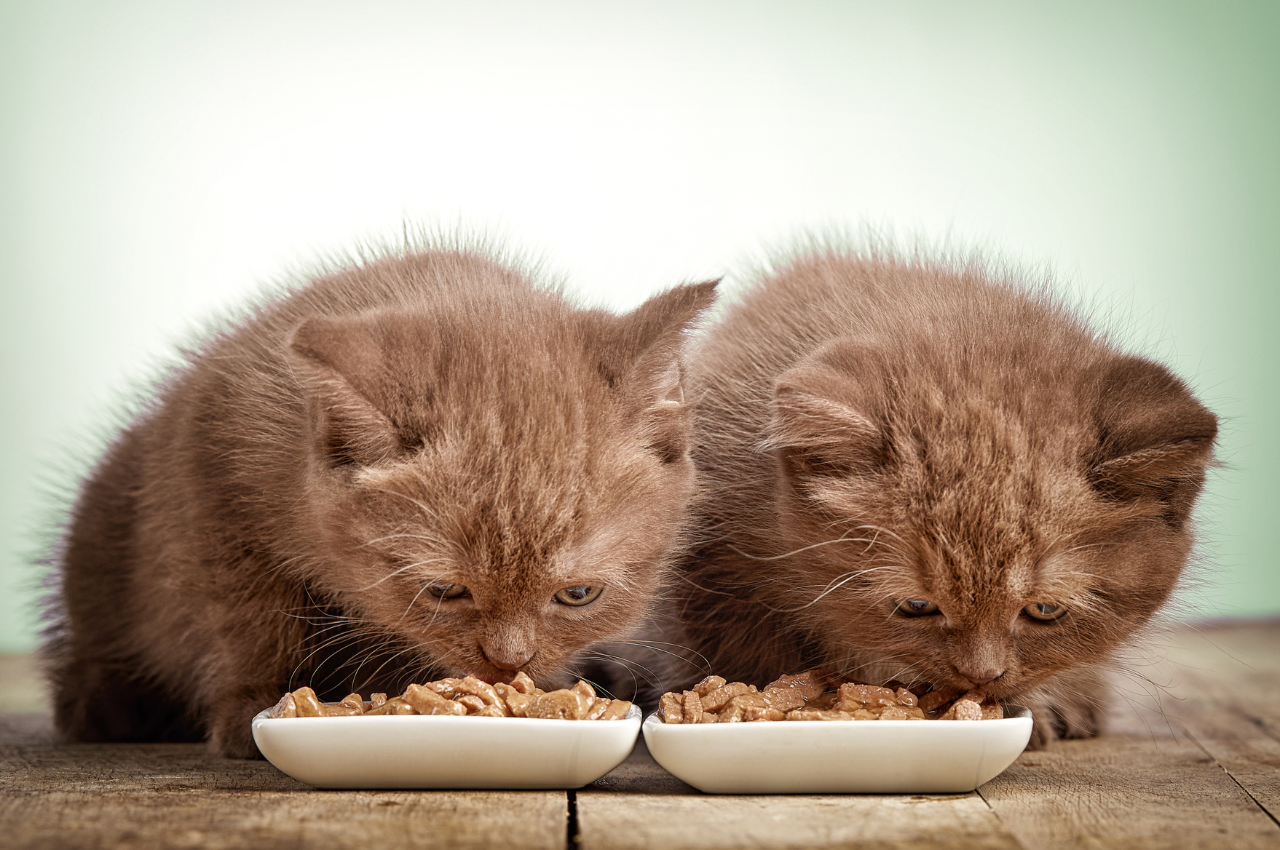To make homemade cat food, ensure a balance of proteins, carbohydrates, and essential nutrients. Cook thoroughly and serve fresh to your feline companion for optimal health and nutrition.
Caring for your cat’s dietary needs by preparing homemade food can be a rewarding experience. By following a few simple guidelines and using quality ingredients, you can ensure that your furry friend receives the best nutrition possible. Homemade cat food allows you to control what goes into your pet’s diet, avoiding any potentially harmful additives or fillers found in commercial cat food. With a little effort and planning, you can provide your cat with a well-balanced diet that promotes their overall well-being.
Introduction to Homemade Cat Food
Making homemade cat food can be a rewarding and beneficial option for cat owners who want to ensure the health and well-being of their furry friends. By taking control of your cat’s diet, you can provide them with a nutritionally balanced meal tailored to their specific needs. In this article, we will explore the benefits of a DIY diet for felines and discuss important safety considerations before you start.

Benefits of a Diy Diet for Felines
A DIY diet for cats offers several advantages over commercial cat food:
- Nutritional control: By preparing your cat’s food at home, you have full control over the ingredients, ensuring that your cat receives all the necessary nutrients.
- Quality ingredients: You can carefully select high-quality ingredients, such as lean meats and fresh vegetables, to provide your cat with a wholesome and natural diet.
- Allergen management: If your cat has specific dietary sensitivities or allergies, creating homemade food allows you to eliminate potential allergens and customize their diet accordingly.
- Reduced additives: Commercial cat food often contains artificial additives and preservatives, which can be avoided by making your own cat food.
Safety Considerations Before You Start
Before embarking on a homemade cat food journey, it’s essential to consider the following safety precautions:
- Consult with a veterinarian: Speak with your veterinarian to ensure that a homemade diet is suitable for your cat’s specific needs, taking into account their age, health conditions, and any dietary restrictions.
- Nutritional balance: Cats require a specific balance of nutrients, including proteins, fats, vitamins, and minerals. It’s crucial to research and follow veterinary-approved recipes to ensure your cat’s diet is nutritionally balanced.
- Hygiene and food handling: Practice good hygiene while preparing and handling homemade cat food. This includes washing hands, using clean utensils, and storing the food properly to avoid contamination.
- Transitioning gradually: If you decide to switch your cat from commercial food to homemade food, it’s important to introduce the new diet gradually to avoid digestive issues. The gradual transition allows your cat’s digestive system to adjust to the new food gradually.
Understanding Your Cat’s Nutritional Needs
Satisfy your cat’s nutritional needs by making homemade cat food. This ensures a balanced diet, free of additives and fillers. Choose high-quality ingredients for a healthy feline diet.
As a cat owner, one of your primary responsibilities is to ensure that your feline friend receives adequate nutrition. Feeding your cat homemade food can be an excellent way to provide them with a balanced diet that meets their nutritional requirements. Before you start cooking for your cat, you need to understand their dietary needs.
Essential Nutrients for Cats
Cats are obligate carnivores, which means that they require a diet that consists primarily of meat. A balanced cat diet should include essential nutrients such as protein, fat, vitamins, and minerals. Here are some of the essential nutrients that your cat needs:
| Essential Nutrients | Functions | Sources |
| Protein | Building and repairing tissues, producing enzymes and hormones | Meat, fish, poultry, eggs |
| Fat | Providing energy, supporting skin and coat health, aiding in nutrient absorption | Meat, fish, poultry, oils |
| Vitamins | Regulating bodily functions, supporting immune system health | Meat, fish, poultry, fruits, vegetables |
| Minerals | Building strong bones and teeth, aiding in nerve and muscle function | Meat, fish, poultry, dairy, grains, vegetables |
Common Dietary Deficiencies to Avoid
While feeding your cat homemade food can be beneficial, it’s important to avoid common dietary deficiencies that can harm your cat’s health. Here are some of the common dietary deficiencies that you should be aware of:
- Taurine: Cats require taurine, an amino acid that is essential for heart and eye health. Taurine is found primarily in animal-based proteins, so it’s crucial to include meat in your cat’s diet.
- Vitamin A: Vitamin A is essential for maintaining healthy skin, coat, and vision. Cats require preformed vitamin A, which is found in animal liver, eggs, and dairy products.
- Arachidonic acid: Cats require arachidonic acid, a type of omega-6 fatty acid that is crucial for maintaining healthy skin and coat. Arachidonic acid is found in animal-based fats, so it’s essential to include meat in your cat’s diet.
Understanding your cat’s nutritional needs is crucial when it comes to feeding them a balanced diet. By including essential nutrients such as protein, fat, vitamins, and minerals in your cat’s homemade food, you can ensure that they receive all the nutrition they need to stay healthy. Additionally, avoiding common dietary deficiencies can help prevent health problems and ensure that your cat thrives.
Getting Started with Homemade Cat Food
Making homemade cat food is a great way to ensure that your feline friend is getting the nutrients they need. It can be a bit daunting to get started, but with the right tools and ingredients, you’ll be on your way to providing your cat with a healthy diet in no time.
Tools and Equipment Needed
Before you begin making homemade cat food, you’ll need to make sure you have the right tools and equipment. Here’s a list of what you’ll need:
| Tools and Equipment | Details |
| Food Processor or Blender | A food processor or blender will be needed to chop and mix the ingredients. |
| Cooking Pot | You’ll need a pot to cook any meat or vegetables that need to be cooked. |
| Baking Dish | If you’re making homemade cat food that needs to be baked, you’ll need a baking dish. |
| Measuring Cups and Spoons | Accurate measurements are important for making sure your cat is getting the right nutrients. |
| Storage Containers | You’ll need containers to store your homemade cat food in the fridge or freezer. |
Selecting Quality Ingredients
When it comes to making homemade cat food, selecting quality ingredients is crucial. Here are some things to keep in mind:
- Meat: Choose lean meats like chicken, turkey, or beef. Avoid meats that are high in fat or gristle.
- Vegetables: Cats are obligate carnivores, which means they need meat to survive. However, adding a small amount of vegetables to their diet can be beneficial. Good options include sweet potatoes, carrots, and green beans.
- Supplements: It’s important to make sure your cat is getting all the nutrients they need. Adding supplements like fish oil, taurine, and vitamin E can help ensure their diet is balanced.
By following these tips and using the right tools and ingredients, you’ll be well on your way to making homemade cat food that your furry friend will love.
Simple Homemade Cat Food Recipes
When it comes to providing the best nutrition for your feline friend, homemade cat food can be a great option. Creating simple homemade cat food recipes allows you to ensure that your cat is getting a well-balanced, nutritious diet. Let’s take a look at a couple of easy and nutritious recipes that you can prepare for your beloved feline companion.
Basic Chicken and Rice Meal
One simple homemade cat food recipe that your cat will love is the basic chicken and rice meal. This recipe provides a good balance of protein and carbohydrates, essential for your cat’s well-being.
Fish Delight for Feline Palates
For a delightful variation, consider preparing a fish-based homemade cat food. Cats often enjoy the taste of fish, and this recipe can be a hit with your feline friend. It’s important to ensure that the fish is thoroughly cooked and free of any bones before serving it to your cat.
Raw Vs. Cooked: Pros and Cons
Making homemade cat food can be a great option for pet owners who want to control the ingredients in their cat’s diet. When it comes to deciding whether to feed your cat raw or cooked food, there are pros and cons to both options. Raw food may have more nutritional benefits, but cooked food can be safer and easier to prepare.

Making homemade cat food allows you to control the quality of ingredients. Raw cat food provides essential nutrients but requires careful handling.
Pros of raw cat food
- Preserves more nutrients.
- Mimics a cat’s natural diet.
- Can improve digestion.
Cons of raw cat food
- Risk of bacterial contamination.
- Requires freezing and thawing meat.
- Not suitable for all cats.
Cooked cat food is safer but may lose some nutrients through the cooking process.
Pros of cooked cat food
- Reduced risk of bacterial contamination.
- Easier to prepare and store.
- Suitable for cats with sensitive stomachs.
Cons of cooked cat food
- May lose some nutrients.
- May not appeal to picky eaters.
- Requires more cooking time.
Preparing Raw Cat Food Safely
When preparing raw cat food, follow these guidelines:
- Use fresh, high-quality ingredients.
- Keep surfaces and utensils clean.
- Store raw meat separately from other foods.
- Thaw meat in the refrigerator.
Cooked Cat Food Recipes
Try these cooked cat food recipes for your feline friend:
- Chicken and rice: Boil chicken, and add cooked rice.
- Fish stew: Simmer fish with veggies in broth.
- Beef and liver: Cook beef and liver, and blend into a paste.
Experiment with different recipes to find what your cat enjoys most.
Incorporating Supplements
Making homemade cat food can be a rewarding way to ensure your feline friend gets the best nutrition. When preparing homemade cat food, it’s essential to incorporate supplements to ensure that the diet is balanced and meets all of your cat’s nutritional needs.
Essential Supplements for a Balanced Diet
When creating homemade cat food, it’s crucial to include the necessary supplements to provide a balanced diet for your pet. Essential supplements for cats include:
- Taurine: An amino acid that is vital for heart and eye health in cats.
- Vitamin E: An antioxidant that helps support the immune system and overall health.
- Omega-3 Fatty Acids: Essential for skin, coat, and overall health.
- Calcium: Important for bone health and overall growth and development.
How to Properly Add Supplements to Homemade Food
When adding supplements to homemade cat food, it’s important to do so carefully to ensure that your cat receives the right amount of each nutrient. Here are some tips for properly incorporating supplements:
- Consult a Veterinarian: Before adding any supplements to your cat’s diet, consult with a veterinarian to determine the specific needs of your cat.
- Follow Recommended Dosages: Always follow the recommended dosages for each supplement to avoid over-supplementation.
- Integrate Supplements into the Recipe: Mix supplements thoroughly into the homemade cat food recipe to ensure even distribution.
- Monitor Your Cat’s Health: After incorporating supplements, monitor your cat’s health and make adjustments as needed based on their well-being.
Feeding Schedule and Portion Control
Feeding your cat a homemade diet requires careful consideration of their feeding schedule and portion control. Establishing a consistent routine and providing the right amount of food is crucial for maintaining your cat’s health and well-being. In this section, we will explore how to determine the right amount of food and create a feeding routine that ensures your cat receives the nutrition they need.
Determining The Right Amount of Food
When determining the appropriate amount of homemade cat food to feed your feline friend, it’s essential to consider their age, weight, activity level, and overall health. A general guideline is to provide 1.5 to 2.5% of their body weight in food per day. For example, a 10-pound cat would require approximately 3.2 to 5.3 ounces of food daily. However, it’s crucial to consult with a veterinarian to determine the specific dietary needs of your cat.
Creating a Consistent Feeding Routine
Establishing a consistent feeding schedule is vital for your cat’s overall well-being. A regular routine helps regulate their metabolism and prevents overeating. Consider dividing their daily food portion into two to four meals to ensure they receive regular nourishment throughout the day. Additionally, create a quiet and comfortable feeding environment to minimize stress and promote healthy eating habits.
Transitioning Your Cat to a Homemade Diet
Transitioning your cat to a homemade diet requires patience and careful planning to ensure a smooth shift from commercial cat food to homemade meals. Cats can be finicky eaters, so it’s essential to introduce new foods gradually and monitor their health closely. Here’s how you can transition your cat to a homemade diet:
Gradual Introduction to New Foods
When introducing homemade cat food, start by mixing a small amount with your cat’s regular food. Gradually increase the proportion of homemade food over a period of 7-10 days. This will allow your cat to adjust to the new flavors and textures without causing digestive upset.
Monitoring Your Cat’s Health and Adjusting The Diet
Keep a close eye on your cat’s health during the transition period. Look for any signs of digestive issues, allergies, or discomfort. If you notice any adverse reactions, consult your veterinarian immediately. Adjust the homemade diet based on your cat’s response and dietary needs, ensuring it provides all the essential nutrients for feline health.
Storing and Preserving Homemade Cat Food
When it comes to homemade cat food, ensuring safe storage practices is crucial to maintain its quality and prevent spoilage. By following proper storage guidelines, you can preserve the nutritional value of the food and keep it safe for your feline friend to consume.
Safe Storage Practices
After preparing homemade cat food, it’s essential to store it properly to maintain its freshness and prevent the growth of harmful bacteria. Store the food in airtight containers to minimize exposure to air and moisture, which can lead to spoilage. Additionally, keep the food in the refrigerator at a temperature below 40°F (4°C) to inhibit bacterial growth and maintain its quality.
Freezing and Thawing Tips
If you plan to store homemade cat food for an extended period, consider freezing it to preserve its freshness. Divide the food into portion-sized servings and store them in freezer-safe containers. Label each container with the date of preparation to track its freshness. When thawing the food, do so in the refrigerator to prevent the growth of bacteria and maintain its integrity.
Troubleshooting Common Issues
When making homemade cat food, it’s important to be aware of potential issues that may arise. Here are some solutions to common problems:

Dealing with a Picky Eater
If your cat is a picky eater, try these tips:
- Experiment with different protein sources.
- Mix in a small amount of wet food to entice them.
- Gradually introduce homemade food alongside their regular diet.
Adjusting Recipes for Special Dietary Needs
For cats with special dietary needs, consider the following:
- Consult with a veterinarian for customized recipes.
- Incorporate supplements for essential nutrients.
- Avoid ingredients that may trigger allergies or sensitivities.
Frequently Asked Questions
Here are some commonly asked questions about how to make homemade cat food:
How Can I Make My Own Cat Food at Home?
To make cat food at home, you can start with a protein source like chicken or fish. Cook it thoroughly and add vegetables like carrots or spinach. Mix in a small amount of grains like brown rice and add supplements like fish oil for omega-3s.
Is Homemade Food Better for Cats?
Homemade food for cats can be better because it allows control over ingredients and quality. This ensures a balanced diet and avoids harmful additives. However, it’s important to consult with a veterinarian to ensure your cat’s specific nutritional needs are met.
Is It Cheaper to Make My Own Cat Food?
Yes, making your own cat food can be cheaper than buying commercial brands. You can save money by using affordable ingredients.
What Should The First 3 Ingredients in Cat Food Be?
The first three ingredients in cat food should be high-quality animal protein sources, such as chicken, beef, or fish. These proteins are essential for a cat’s overall health and provide the necessary nutrients for growth and maintenance. Avoid cat foods with fillers or by-products as the main ingredients.
Conclusion
In a nutshell, making homemade cat food is a rewarding and beneficial endeavor for both you and your feline friend. By following these simple steps and guidelines, you can ensure that your cat receives a nutritious and balanced diet. Remember to consult with your veterinarian for specific dietary requirements and make adjustments as needed.
With homemade cat food, you have the power to provide your furry companion with the best quality ingredients and tailor their meals to their unique needs. So why not give it a try and see the positive impact it can have on your cat’s health and happiness?
